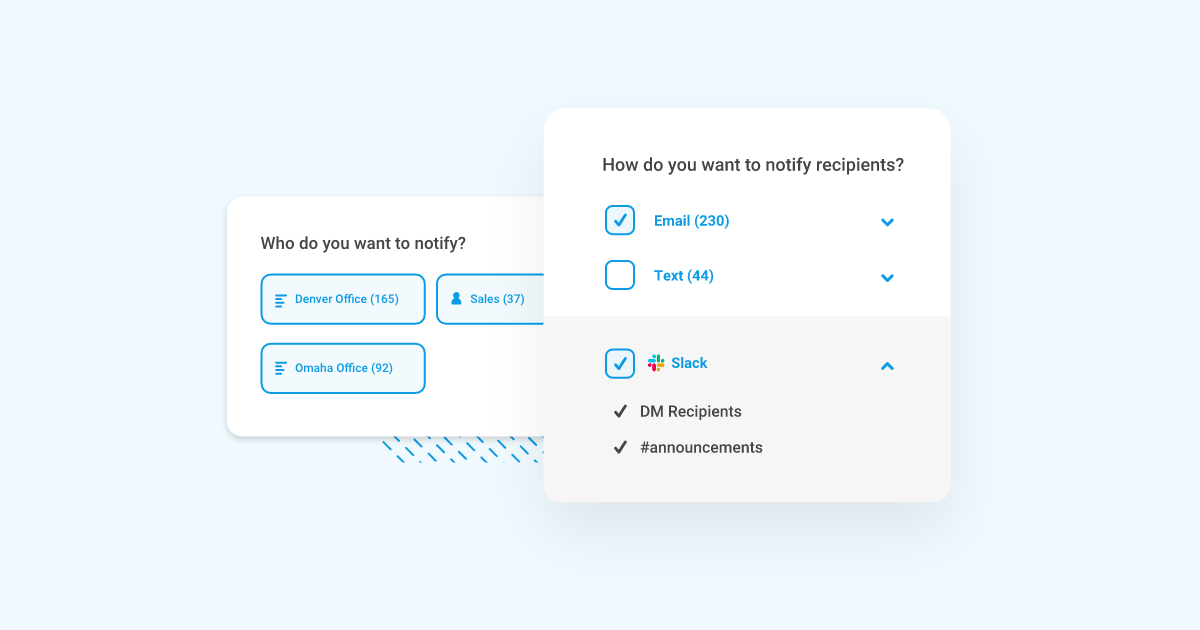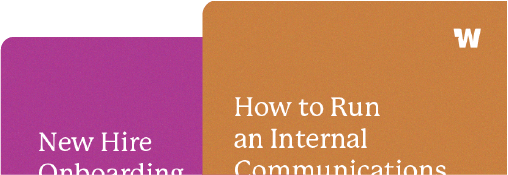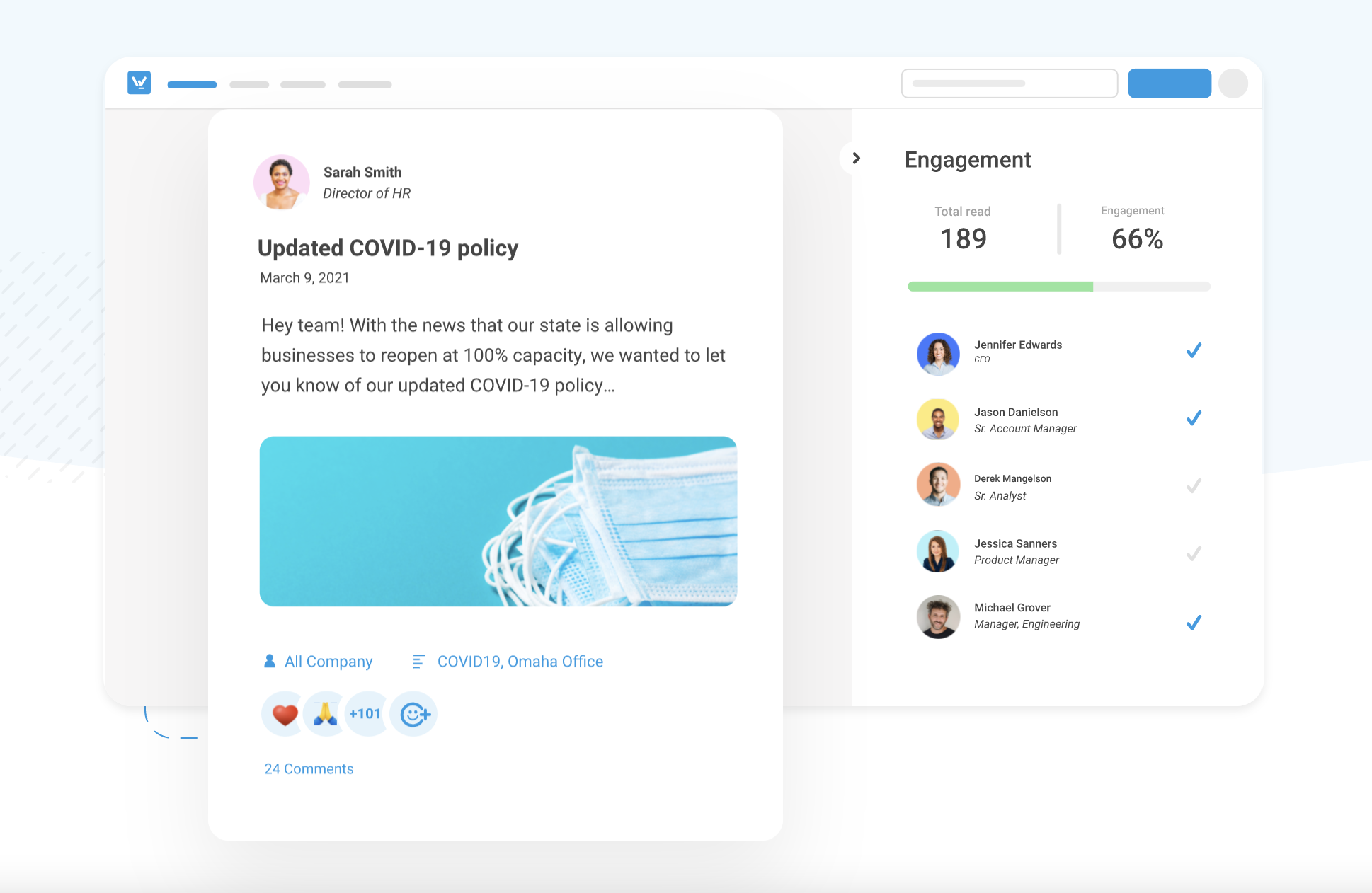How to automate your company newsletter

Putting together a monthly company newsletter can be a real chore, especially if your organization hasn’t mastered the art and science of great internal communications yet.
If you’re spending a significant part of your time chasing down department heads, asking for event details, or trying to drum up new ideas for engaging newsletter content (here are 20!), you may have wondered: is there an easier way to put this together?! Can I automate it?
You can, to an extent! I’ll take you through the workaround. 🙂
Using email marketing software
Many organizations will use software like Mailchimp, Constant Contact, Campaign Monitor, Hubspot, etc. to send out their monthly newsletters. All of these email marketing tools are fantastic in their own right for marketing purposes; however, they tend to trip up when it comes to internal use.

For one, they never sync with your HRIS system, which means that you’re stuck managing a bunch of distribution lists (“Can you add these new hires to their department-wide email?”) and making sure each employee is added to all the right things.
The second (and biggest) challenge with automating newsletters via email is that you have to single handedly track down and create all the content that goes in it. You’re stuck combing through Slack messages, email threads, internal blog posts, PR articles, birthdays and anniversaries, the event calendar, you name it.
Not to mention the teams within your company all have likely created their own communication systems, so you have to ask department heads and company leadership if they “have anything for the newsletter this month.”
Obviously, it’d be easier to put together if employees all communicated important information in the same place. 😉
You can make the creation of a newsletter a little easier in most of these email marketing platforms, by utilizing templates or cloning prior newsletters. However, the content almost always has to be customized each and every time.
If you use an internal blog to communicate updates to the company, you can set up an email newsletter using MailChimp’s RSS-to-email feature, which will automatically send out an email with your latest blog posts on a daily, weekly, or monthly basis. This is a great tutorial for that. Though it’s completely automated, you can’t customize the content for different audiences.
There are a few other companies that offer a similar paid feature: FeedOtter, MailerLite, or Zapier.
Emailing & printing a PDF
For smaller organizations, your company newsletter may be built as a PDF and then emailed out to employees as an attachment, or even printed and left on desks for more frontline workers.
The advantage to this format is that it’s generally pretty easy to plug in content and not mess around with email templates at all; however, this is a really challenging way to communicate with your employees. PDF attachments aren’t easily searchable, and we often find that the engagement on these sorts of newsletters is pretty low, because you have to get employees to open the email and then open the PDF.
If you’re going this route, something like Canva has a bunch of great starter newsletter templates, especially for non-designers. This can help you streamline a bit of the building process, but you’ll still have to update content every time and send the newsletter manually.
The workaround with Workshop
Workshop is the closest you’ll ever get to completely automating your company’s newsletter. You can use it a couple of ways:
1.) To make creating a newsletter easier than ever (like, copy-and-paste easy)
Workshop creates a centralized place for your employees to find important information, all of which can be sent via email or text to a targeted group of employees. These updates are meant to be authored by leaders within your organization, which means that come newsletter time, they’re super easy to scroll through and incorporate into your monthly newsletter.
Or, you can simply create a streamlined newsletter as an update, and then you don’t have to mess with templates at all. (The updates feature a really simple, sleek design that works universally across companies, but you can customize images and colors to make sure it still feels coherent with your company’s brand.)
Since all of the updates will have already been authored and approved by department heads, you can skip a review process, too. 😉
2.) To replace your newsletter with individual, targeted updates
Crafting a newsletter that is relevant to the entire company is difficult, if not impossible. You can treat Workshop’s updates as a running newsletter, and inform your employees of relevant news right when it happens via email, text, and/or Slack.
And if they miss the update, they will never have to scroll back through their inbox to find it buried in a newsletter from two months ago; all of the updates that have been sent to them will continue to live in one central location.

Curious to learn more? Request a demo here.








